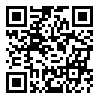Sat, Dec 6, 2025
[Archive]
Volume 3, Issue 3 (8-2021)
IJMCL 2021, 3(3): 1-10 |
Back to browse issues page
Download citation:
BibTeX | RIS | EndNote | Medlars | ProCite | Reference Manager | RefWorks
Send citation to:



BibTeX | RIS | EndNote | Medlars | ProCite | Reference Manager | RefWorks
Send citation to:
Flink T, Matos J. (2021). Age-related Reductions in Manual Asymmetry with Increased Visuospatial Demands. IJMCL. 3(3), 1-10. doi:10.52547/ijmcl.3.3.1
URL: http://ijmcl.com/article-1-96-en.html
URL: http://ijmcl.com/article-1-96-en.html
Ph.D. Exercise Science, Department of Applied Exercise Science, Gannon University, 105 Commercial Center Drive, Ruskin, FL 33573 USA , flink001@gannon.edu
Abstract: (4032 Views)
Background: Many factors influence manual asymmetry during goal-directed motor tasks, but it is unclear how the manipulation of visuospatial information influences laterality in hand control in aging adults.
Objective: To examine age-related changes in manual asymmetry with increased visuospatial processing demands.
Methods: Twenty young (M = 20.8, SD = 3 years) and 20 older (M = 69.9, SD = 6 years) right-handed adults participated in a motor task which required pieces to be inserted into spatially mapped holes (Task 1), and a motor plus visuospatial task (Task 2), where the pieces to be inserted were not spatially mapped with the holes. Manual asymmetry was determined using the laterality quotient (LQ), which was computed using time to completion.
Results: Dominant right-hand performance was observed for Task 1 for young adults (LQ = 3.91) and older adults (LQ = 5.14), but for Task 2 a more balanced performance between the hands was found for older adults (LQ = -0.73) versus young adults (LQ = 6.53), p < 0.05.
Conclusions: The reduction in manual asymmetry in Task 2 with age is most likely due to the added demands from increased visuospatial processing, which differentially influenced movement control in older compared to young adults.
Objective: To examine age-related changes in manual asymmetry with increased visuospatial processing demands.
Methods: Twenty young (M = 20.8, SD = 3 years) and 20 older (M = 69.9, SD = 6 years) right-handed adults participated in a motor task which required pieces to be inserted into spatially mapped holes (Task 1), and a motor plus visuospatial task (Task 2), where the pieces to be inserted were not spatially mapped with the holes. Manual asymmetry was determined using the laterality quotient (LQ), which was computed using time to completion.
Results: Dominant right-hand performance was observed for Task 1 for young adults (LQ = 3.91) and older adults (LQ = 5.14), but for Task 2 a more balanced performance between the hands was found for older adults (LQ = -0.73) versus young adults (LQ = 6.53), p < 0.05.
Conclusions: The reduction in manual asymmetry in Task 2 with age is most likely due to the added demands from increased visuospatial processing, which differentially influenced movement control in older compared to young adults.
Type of Study: Original Article |
Subject:
2. Motor control
Received: 2021/04/23 | Accepted: 2021/07/9
Received: 2021/04/23 | Accepted: 2021/07/9
References
1. Baweja, H. S., Kwon, M., Onushko, T., Wright, D. L., Corcos, D. M., & Christou, E. A. (2015). Processing of visual information compromises the ability of older adults to control novel fine motor tasks. Experimental Brain Research, 233, 3475-3488. doi:10.1007/s00221-015-4408-4. [DOI:10.1007/s00221-015-4408-4]
2. Bopp, K. L., & Verhaeghen, P. (2007). Age-related differences in control processes in verbal and visuospatial working memory: Storage, transformation, supervision, and coordination. Journal of Gerontology: Psychological Sciences, 62B(5), P239-P246. [DOI:10.1093/geronb/62.5.P239]
3. Cabeza, R. (2002). Hemispheric asymmetry reduction in older adults: The HAROLD model. Psychology and Aging, 17(1), 85-100. doi:10.1037//0882-7974.17.1.85. [DOI:10.1037//0882-7974.17.1.85]
4. Cabeza, R., Anderson, N. D., Locantore, J. K., & McIntosh, A. R. (2002). Aging gracefully: Compensatory brain activity in high-performing older adults. NeuroImage, 17, 1394-1402. doi:10.1006/nimg.2002.1280. [DOI:10.1006/nimg.2002.1280]
5. Cabeza, R., Daselaar, S. M., Dolcos, F., Prince, S. E., Budde, M., & Nyberg, L. (2004). Task independent and task-specific age effects on brain activity during working memory, visual attention and episodic retrieval. Cerebral Cortex, 14, 364-375. doi:10.1093/cercor/bhg133. [DOI:10.1093/cercor/bhg133]
6. Cabeza, R., Grady, C. L., Nyberg, L., McIntosh, A. R., Tulving, E., Kapur, S., et al. (1997). Age related differences in neural activity during memory encoding and retrieval: A positron emission tomography study. Journal of Neuroscience, 17, 391-400. [DOI:10.1523/JNEUROSCI.17-01-00391.1997]
7. Cansino, S., Guzzon, D., Martinelli, M., Barollo, M., & Casco, C. (2011). Effects of aging on interference control in selective attention and working memory. Memory & Cognition, 39, 1409-1422. doi:10.3758/s13421-011-0109-9 [DOI:10.3758/s13421-011-0109-9]
8. Chua, R., Pollock, B. J., Elliott, D., Swanson, L. R., & Carnahan, H. (1995). The influence of age on manual asymmetries in movement preparation and execution. Developmental Neuropsychology, 11, 129-137. [DOI:10.1080/87565649509540608]
9. Dolcos, F., Rice, H. J., & Cabeza, R. (2002). Hemispheric asymmetry and aging: Right hemisphere decline or asymmetry reduction. Neuroscience and Biobehavioral Reviews, 26, 819-825. [DOI:10.1016/S0149-7634(02)00068-4]
10. Flink, T. S., & Iorio, A. N. (2015). An examination of change in control of the right and the left hand across the lifespan. Journal of Motor Learning and Development, 3, 11-22. [DOI:10.1123/jmld.2014-0044]
11. Francis, K. L., & Spirduso, W. W. (2000). Age differences in the expression of manual asymmetry. Experimental Aging Research, 26, 169-180. [DOI:10.1080/036107300243632]
12. Guzzetti, S., & Daini, R. (2014). Inter-hemispheric recruitment as a function of task complexity, age and cognitive reserve. Aging, Neuropsychology, and Cognition, 21(6), 722-745. doi:10.1080/13825585.2013.874522 [DOI:10.1080/13825585.2013.874522]
13. Hale, S., Rose, N. S., Myerson, J., Strube, M. J., Sommers, M., Tye-Murray, N., & Spehar, B. (2011). The structure of working memory abilities across the adult life span. Psychology and Aging, 26(1), 92-110. doi:10.1037a0021483 [DOI:10.1037/a0021483]
14. Hausmann, M., Kirk, I. J., & Corballis, M. C. (2004). Influence of task complexity on manual asymmetries. Cortex, 40, 103-110. [DOI:10.1016/S0010-9452(08)70923-7]
15. Hutchinson, S., Kobayashi, M., Horkan, C. M., Pascual-Leone, A., Alexander, M. P., & Schlaug,
16. G. (2002). Age-related differences in movement representation. NeuroImage, 17, 1720-1728. doi:10.1006/nimg.2002.1309 [DOI:10.1006/nimg.2002.1309]
17. Kalisch, T., Wilimzig, C., Kleibel, N., Tegenthoff, M., & Dinse, H. R. (2006). Age-related attenuation of dominant hand superiority. PloS ONE, 1, e90. doi:10.1371/journal.pone.0000090 [DOI:10.1371/journal.pone.0000090]
18. Li, Z., Moore, A. B., Tyner, C., Hu, X. (2009). Asymmetric connectivity reduction and its relationship to "HAROLD" in aging brain. Brain Research, 1295, 149-158. doi:10.1016/j.brainres.2009.08.004 [DOI:10.1016/j.brainres.2009.08.004]
19. Mitrushina, M., Fogel, T., D'Elia, L., Uchiyama, C., & Satz, P. (1995). Performance on motor tasks as an indication of increased behavioral asymmetry with advancing age. Neuropsychologia,33, 359-364. [DOI:10.1016/0028-3932(94)00113-4]
20. Naccarato, M., Calautti, C., Jones, P. S., Day, D. J., Carpenter, T. A., & Baron, J.-C. (2006). Does healthy aging affect the hemispheric activation balance during paced index-to-thumb opposition task? An fMRI study. NeuroImage, 32, 1250-1256. doi:10.1016/j.neuroimage.2006.05.003 [DOI:10.1016/j.neuroimage.2006.05.003]
21. Oldfield, R. C. (1971). The assessment and analysis of handedness: The Edinburgh Inventory. Neuropsychologia, 9, 97-113. [DOI:10.1016/0028-3932(71)90067-4]
22. Park, D. C., Lautenschlager, G., Hedden, T., Davidson, N. S., Smith, A. D., & Smith, P. K. (2002). Models of visuospatial and verbal memory across the adult life span. Psychology and Aging, 17, 299-320. [DOI:10.1037/0882-7974.17.2.299]
23. Piefke, M., Onur, O. A., & Fink, G. R. (2012). Aging-related changes in neural mechanisms underlying visual-spatial working memory. Neurobiology of Aging, 33, 1284-1297. doi:10.1016/j.neurobiolaging.2010.10.014. [DOI:10.1016/j.neurobiolaging.2010.10.014]
24. Pohl, P. S., Winstein, C. J., & Fisher, B. E. (1996). The locus of age-related movement slowing: Sensory processing in continuous goal-directed aiming. Journal of Gerontology: Psychological Science, 51B, P94-P102. [DOI:10.1093/geronb/51B.2.P94]
25. Provins, K. A. (1997). The specificity of motor skill and manual asymmetry: A review of the evidence and its implications. Journal of Motor Behavior, 29(2), 183-192. [DOI:10.1080/00222899709600832]
26. Przybyla, A., Haaland, K. Y., Bagesteiro, L. B., & Sainburg, R. L. (2011). Motor asymmetry reduction in older adults. Neuroscience Letters,489, 99-104. doi:10.1016/j.neulet.2010.11.074. [DOI:10.1016/j.neulet.2010.11.074]
27. Sainburg, R. L. (2005). Handedness: Differential specializations for control of trajectory and position. Exercise and Sport Sciences Reviews, 33(4), 206-213. [DOI:10.1097/00003677-200510000-00010]
28. Sainburg, R. L., & Kalakanis, D. (2000). Differences in control of limb dynamics during dominant and nondominant arm reaching. Journal of Neurophysiology, 83, 2661-2675. [DOI:10.1152/jn.2000.83.5.2661]
29. Seidler-Dobrin, R. D., & Stelmach, G. E. (1998). Persistence in visual feedback control by the elderly. Experimental Brain Research, 119, 467-474. [DOI:10.1007/s002210050362]
30. Teixeira, L. A. (2008). Categories of manual asymmetry and their variation with advancing age. Cortex, 44, 707-716. doi:10.1016/j.cortex.2006.10.002. [DOI:10.1016/j.cortex.2006.10.002]
31. Temprado, J-J., Sleimen-Malkoun, R., Lemaire, P., Rey-Robert, B., Retornaz, F., & Berton, E. (2013). Aging of sensorimotor processes: A systematic study in Fitts' task. Experimental Brain Research, 228, 105-116. doi:10.1007/s00221-013-3542-0. [DOI:10.1007/s00221-013-3542-0]
32. Wang, J., D'Amato, A., Bambrough, J., Swartz, A. M., & Miller, N. E. (2016). A positive association between active lifestyle and hemispheric lateralization for motor control and learning in older adults. Behavioural Brain Research, 314, 38-44. Retrieved from http://dx.doi.org/10.1016/j.bbr.2016.07.048 [DOI:10.1016/j.bbr.2016.07.048]
33. Wang, J., Przybyla, A., Wuebbenhorst, K., Haaland, K. Y., & Sainburg, R. L. (2011). Aging reduced asymmetries in interlimb transfer of visuomotor adaptation. Experimental Brain Research, 210(2), 283-290. doi:10.1007/s00221-011-2631-1. [DOI:10.1007/s00221-011-2631-1]
34. Wang, J., & Sainburg, R. L. (2007). The dominant and non-dominant arms are specialized for stabilizing different features of task performance. Experimental Brain Research, 178, 565-570. doi:10.1007/s00221-007-0936-x. [DOI:10.1007/s00221-007-0936-x]
35. Yan, J. H., Thomas, J. R., & Stelmach, G. E. (1998). Aging and rapid aiming arm movement control. Experimental Aging Research, 24, 155-168. [DOI:10.1080/036107398244292]
36. Yan, J. H., Thomas, J. R., Stelmach, G. E., & Thomas, K. T. (2000). Developmental features of rapid aiming arm movements across the lifespan. Journal of Motor Behavior, 32(2), 121-140. [DOI:10.1080/00222890009601365]
37. Yeh, T-T., Cinelli, M. E., Lyons, J. L., & Lee, T. D. (2015). Age-related changes in postural control to the demands of a precision task. Human Movement Science, 44, 134-142. Retrieved from http://dx.doi.org/10.1016/j.humov.2015.08.021. [DOI:10.1016/j.humov.2015.08.021]
Send email to the article author
| Rights and Permissions | |
 |
This work is licensed under Attribution 4.0 International (CC BY 4.0). |












